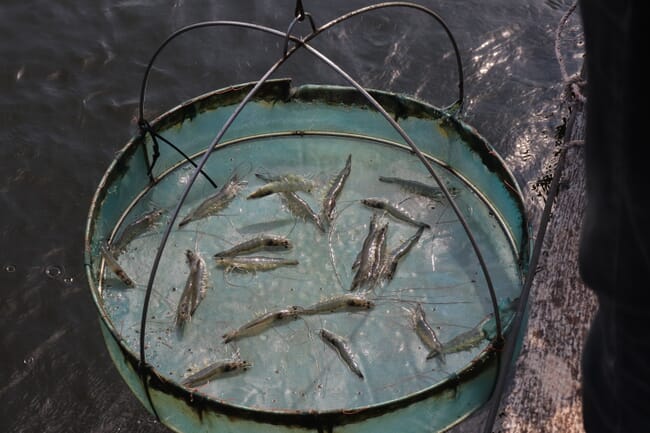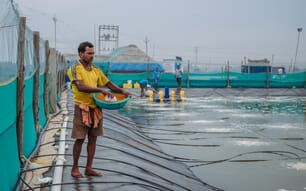The study investigated the effects of two probiotics, Bacillus cereus and Pediococcus acidilactici, on the water quality, growth performance, the survival ratio, economic benefits, immunohematology and bacterial flora in the intestine of whiteleg shrimp, Litopenaeus vannamei after 110 days.

The study was undertaken in nine 1.2 hectare earthen ponds, three of which were used as controls, three of which were treated with P. acidilactici probiotic (106 CFU/mL) and three of which with B. cereus probiotic (106 CFU/mL).
The results showed that the adding B. cereus and P. acidilactici to the water pond positively decreased nitrate, ammonia and biochemical oxygen demand when compared with the control group (p < .05).
However, the researchers noted that there were marked differences in the impact made by the two different strain of probiotics.
In terms of growth, treating shrimp with B. cereus caused significantly higher weight gain (16.72 g) and survival ratio (94.50%) in comparison with control group (p < .05). As a result the researchers calculated that using B. cereus increased shrimp production by 27.30 percent and net income by 92.94 percent compared to the control ponds. As far as the impact on the immune systems of the shrimp the total haemocyte count (9.00), total protein (8.92 g/dl) and lysozyme activity (21.55 U/ml) in treated whiteleg shrimp with B. cereus were “significantly higher” than those untreated (p < .05).
Meanwhile P. acidilactici had a less marked effect, although they calculated that it could still increase production by a not insignificant 18.42 percent and net income by 49.29 percent.
The researchers concluded that adding B. cereus (106 CFU/ml) to earthen ponds is advisable in shrimp farms.
Further information
An abstract of this research, which was published under the title "The effects of water additive Bacillus cereus and Pediococcus acidilactici on water quality, growth performances, economic benefits, immunohematology and bacterial flora of whiteleg shrimp (Penaeus vannamei Boone, 1931) reared in earthen ponds", in Aquaculture Research, is available here.



